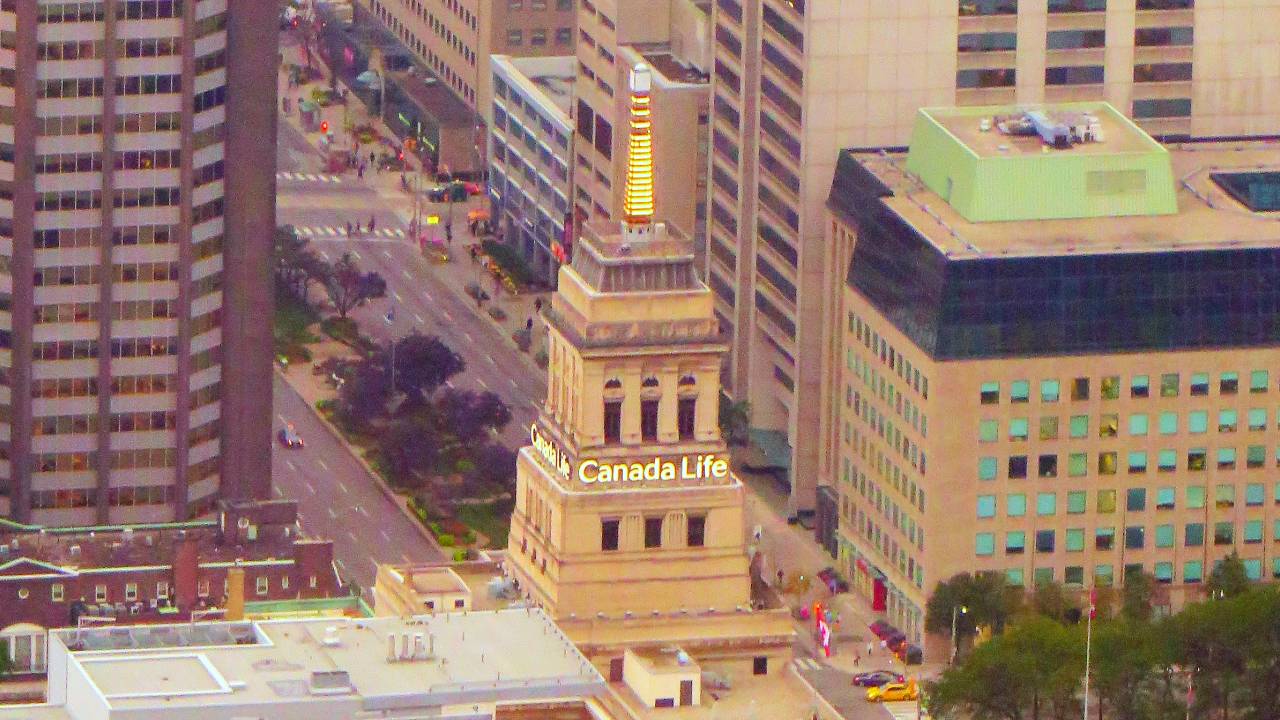Where to find (and how to read) Canada’s oldest weather beacon
The weather beacon atop Toronto’s Canada Life building has been in service since August 1951.

If you’re especially perceptive (and spend a lot of time near Queen St. W. and University Ave.), you may have noticed the lights atop the Canada Life building change colour from time to time.
But unlike those on the CN Tower, these lights aren’t marking cultural moments or special causes. They’re performing a specific public service — and have been for over 70 years.
The Canada Life building lights actually belong to the country’s oldest weather beacon. They were lit up for the first time on the evening of Aug. 9, 1951, and they’ve been going pretty much ever since.
To this day, Torontonians who know the code can look up and get the forecast.
A weather beacon for Toronto
The Canada Life building opened in March 1931 after two years of construction. At the time, it was one of the city’s tallest buildings.
But company brass must have felt like it was missing something, because the beacon arrived almost exactly 20 years later.
Once complete, the structure — made up of the beacon light and the “mast” below it — was 12.5 m (41 ft.) high, contained 1,500 light bulbs, and used 2,743 m (9,000 ft.) of wiring. It sat 98 m (321 ft.) above street level, and was visible from at least 3.2 km (2 mi.) away.
Here’s how the Toronto Daily Star first wrote up the beacon the day after it was introduced to the public:
An illuminated tower atop the Canada Life building at Queen St. and University Ave. last night began operating as the only visual weather-forecasting beacon in Canada. Switched on by [representatives from the meteorological service and publice weather service], it began flashing the official weather forecast into Toronto’s night skies.
Similar to weather-monitoring systems atop buildings in New York City and Boston, the Canada Life beacon was created to both draw interest and provide a service.
“For most people the weather provides a topic of conversation at all times,” then company president E.C. Gill told the Daily Star at the time.
How to read the weather beacon
The beacon has undergone some changes over the years — including a major 2019 remodel that included replacing the old bulbs with LEDs — but its function as a weather forecaster has remained.
To the uninitiated, the lights won’t mean anything, though. So here’s how it works:
The system is updated four times a day with info from Environment Canada. The first of those at 7:00 a.m. and 11:00 a.m. offer a forecast for the next four hours; a 3:00 p.m. update gives conditions for the evening; and a 7:00 p.m. one tells the story for the following day.
The beacon light on top determines type of weather on the forecast:
- Solid green means clear weather;
- Solid red means cloudy;
- Flashing red means rain;
- Flashing white means snow.
But wait! There’s more. The mast lights indicate temperature trends:
- Lights shooting upward mean the temperature is rising;
- Lights shooting down means it’s cooling;
- Solid lights mean the temperature is holding steady.
So next time you’re near Queen and University, consider skipping your weather app and looking up instead. You’ll join countless in-the-know Torontonians who’ve done the exact same thing over the years.
Code and markup by Chris Dinn. ©Torontoverse, 2023